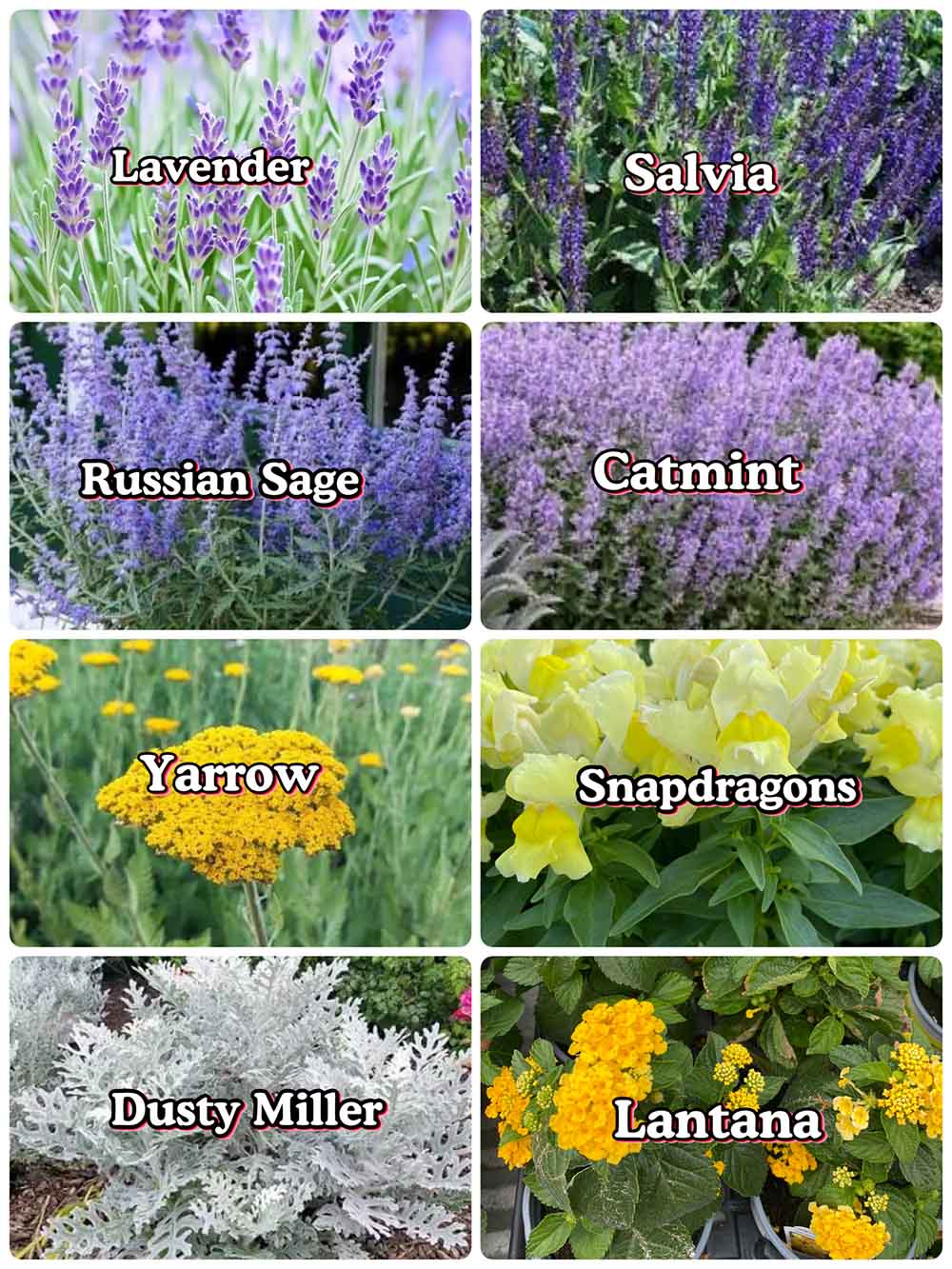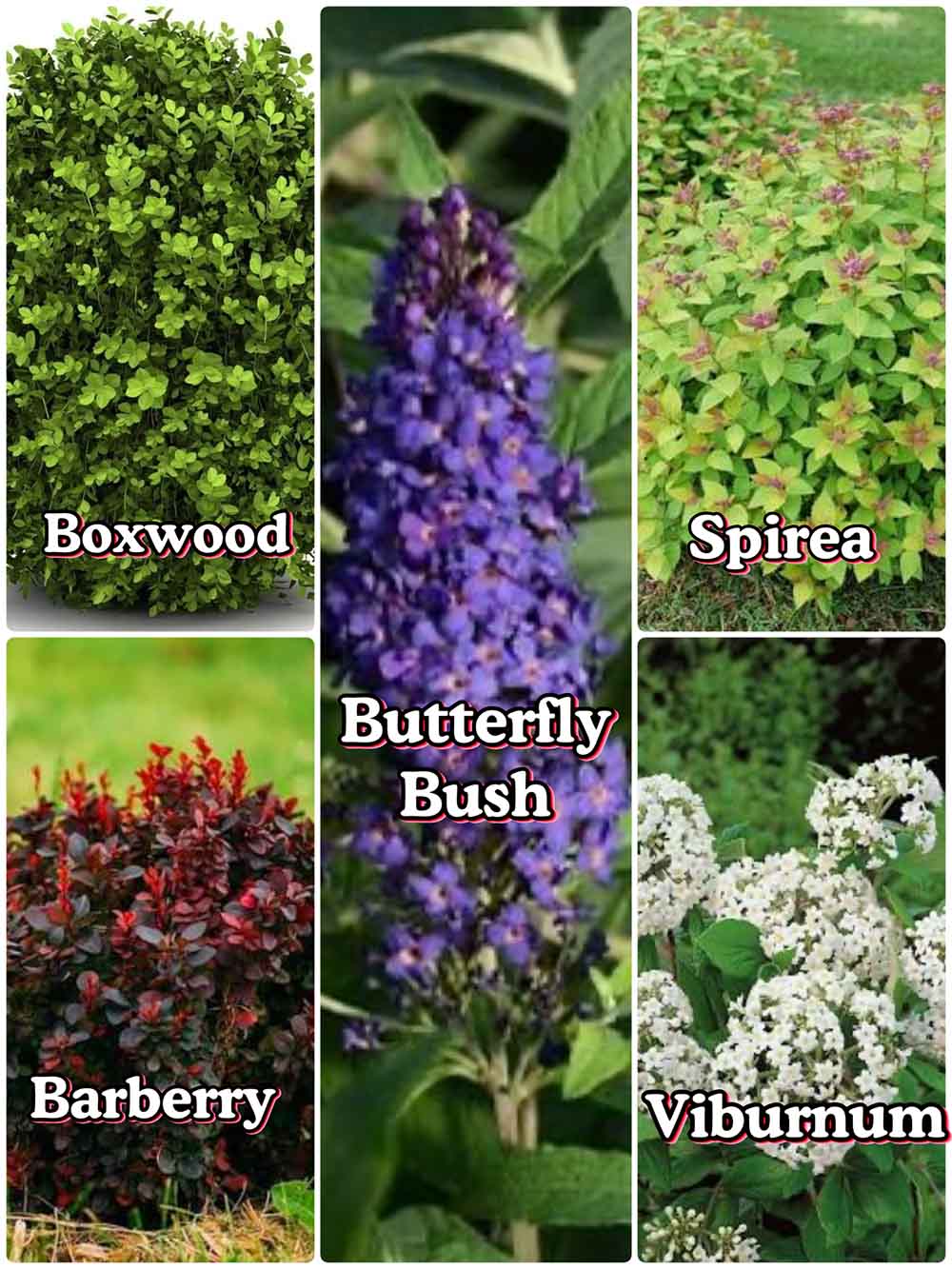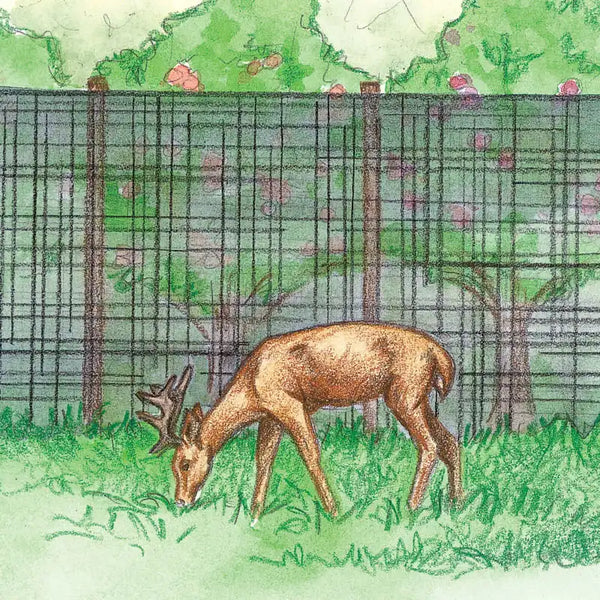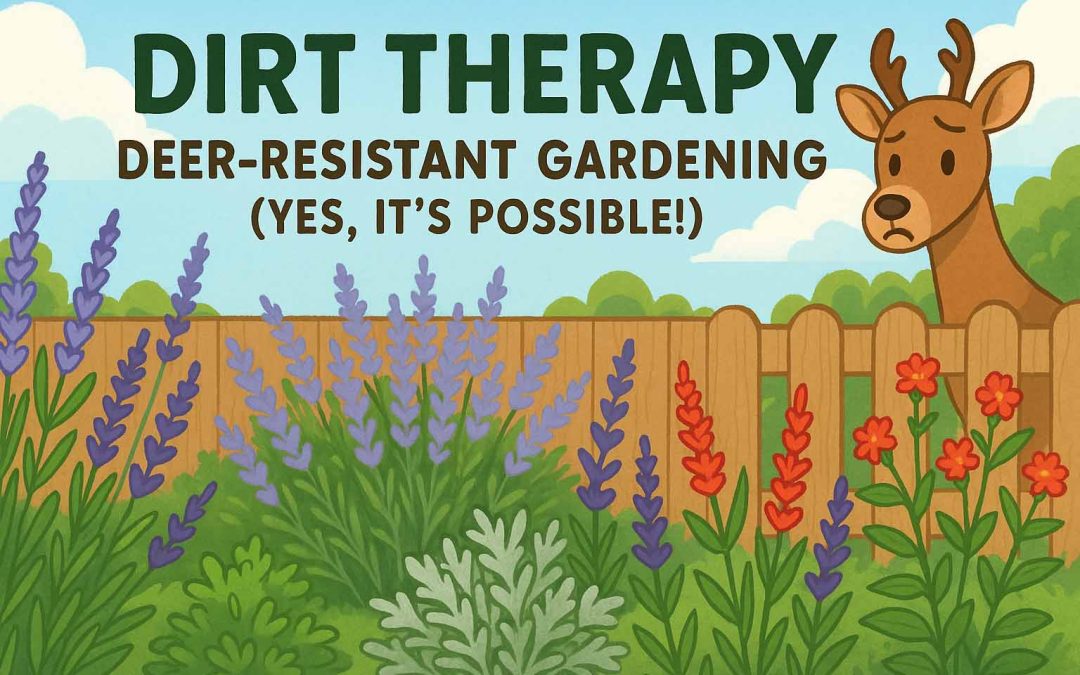Welcome back my friends! We’re bringing you another edition of Dirt Therapy, where we talk about deer resistant gardening. That’s right we’re talking plants, pests, and how to outwit Mother Nature’s four-legged freeloaders. If your hostas keep disappearing overnight or your daylilies look like a deer buffet, this one’s for you.
Why Do Deer Love Our Gardens?
Deer are the nosy neighbors of the wildlife world. They wander through looking for snacks and seem especially fond of:
- Lush, soft foliage (hello, hostas and hydrangeas)
- Tender flowers (especially lilies, pansies, and tulips)
- Sweet-scented plants (like roses and phlox)
Basically, if it’s your favorite plant—it’s probably theirs too.
What Plants do Deer Avoid? (Yes, These Exist!)
When you’re thinking deer resistant gardening, think strong scents, bitter leaves, and fuzzy textures—deer would rather skip dinner than nibble these:
Perennials & Annuals:
- Lavender
- Salvia
- Russian Sage
- Catmint
- Yarrow
- Snapdragons
- Dusty Miller
- Lantana
Shrubs:
- Boxwood
- Butterfly Bush
- Spirea
- Barberry (watch out for thorns!)
- Viburnum
Herbs:
- Rosemary
- Thyme
- Oregano
- Sage
Pro tip: Group these near your most vulnerable plants as a fragrant “deer speed bump.”


So what actually keeps deer away?
Let’s be real — deer are persistent. But here are proven methods that actually help protect your plants:
Motion-Activated Sprinklers
Surprise is your best weapon when it comes to deer resistant gardening! These sprinklers sense movement and blast intruders with a sudden burst of water.
- They’re safe, silent, and fun to watch (especially when they nail a raccoon too).
- Great for smaller beds or along the edges of your garden
Repellents That Smell (to Deer, Not You)
Products that contain egg solids, garlic, capsaicin (hot pepper), or rotten sulfur compounds work by targeting a deer’s strong sense of smell.
- Look for sprays labeled as “dual-action” (taste and scent deterrents).
- Reapply after rain and every few weeks during heavy feeding seasons.
- Rotate brands occasionally so deer don’t get used to the scent.
Pro tip: Spray around, not just on, the plants — treat the perimeter for extra protection.
Use Physical Barriers (a.k.a. Fort Knox for Flowers) and Smart Plant Pairings
Fencing
The most reliable long-term solution — but deer can jump! Make it at least 7–8 feet tall or use double fencing for smaller yards.
Netting
Great for veggie gardens or low-growing flowers.
Cages or domes
Use around new plantings until they toughen up.
Planting decoys or deterrents nearby
Try strong-smelling herbs like rosemary, thyme, or lavender
- Add alliums (ornamental onions) — deer tend to avoid anything in that family
- Even spiky or fuzzy-textured plants (like lamb’s ear) can be a natural deterrent
Pro Tip: Create a “moat” of deer-resistant plants around your lilies to make them less accessible.

How should I lay out my plants to avoid deer?
- Plant your most vulnerable plants (lilies) closer to the house, where deer are less likely to roam.
- Avoid planting in straight paths — deer love a good runway.
What doesn’t work to deter deer (at least not for long)?
Irish Spring soap bars
They will work briefly, until deer realize they’re not food.
Human hair or dryer sheets
These solutions are bassed mostly on a myth.
Fake owls or noise makers
They adapt quickly to these solutions if no other methods are used.
What are some other tips for deterring deer from your garden?

Go for Confusion Tactics
Deer are creatures of habit. Mess with their routine.
- Change up your repellents every few weeks
- Move shiny or noisy objects around the yard (think wind chimes, foil streamers, garden spinners)
- Use motion lights or garden statues (yes, even those creepy owl decoys)
Timing Is Everything
Deer are most destructive in:
- Early spring (hungry after winter)
- Late summer/fall (bulking up for winter)
Be extra cautious during these times, especially with young plants.
One Last Thing…
No plant is completely deer-proof—when they’re hungry enough, deer can be surprisingly bold. But by choosing plants they typically avoid, using a few deterrents, and mixing up your tactics, you can stack the odds in your garden’s favor.
Gardening with deer around might feel like a never-ending game of “what’s left to plant?”—but don’t give up. With a little patience and a lot of lavender, your garden can be beautiful, peaceful, and (mostly) uneaten.
Until next time, may your flowers thrive, your fence stay upright, and your deer stay politely uninterested. HAPPY PLANTING EVERYBODY!!!



Recent Comments